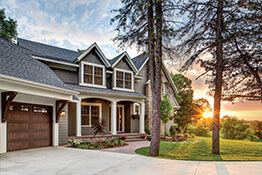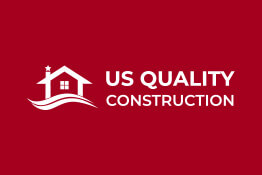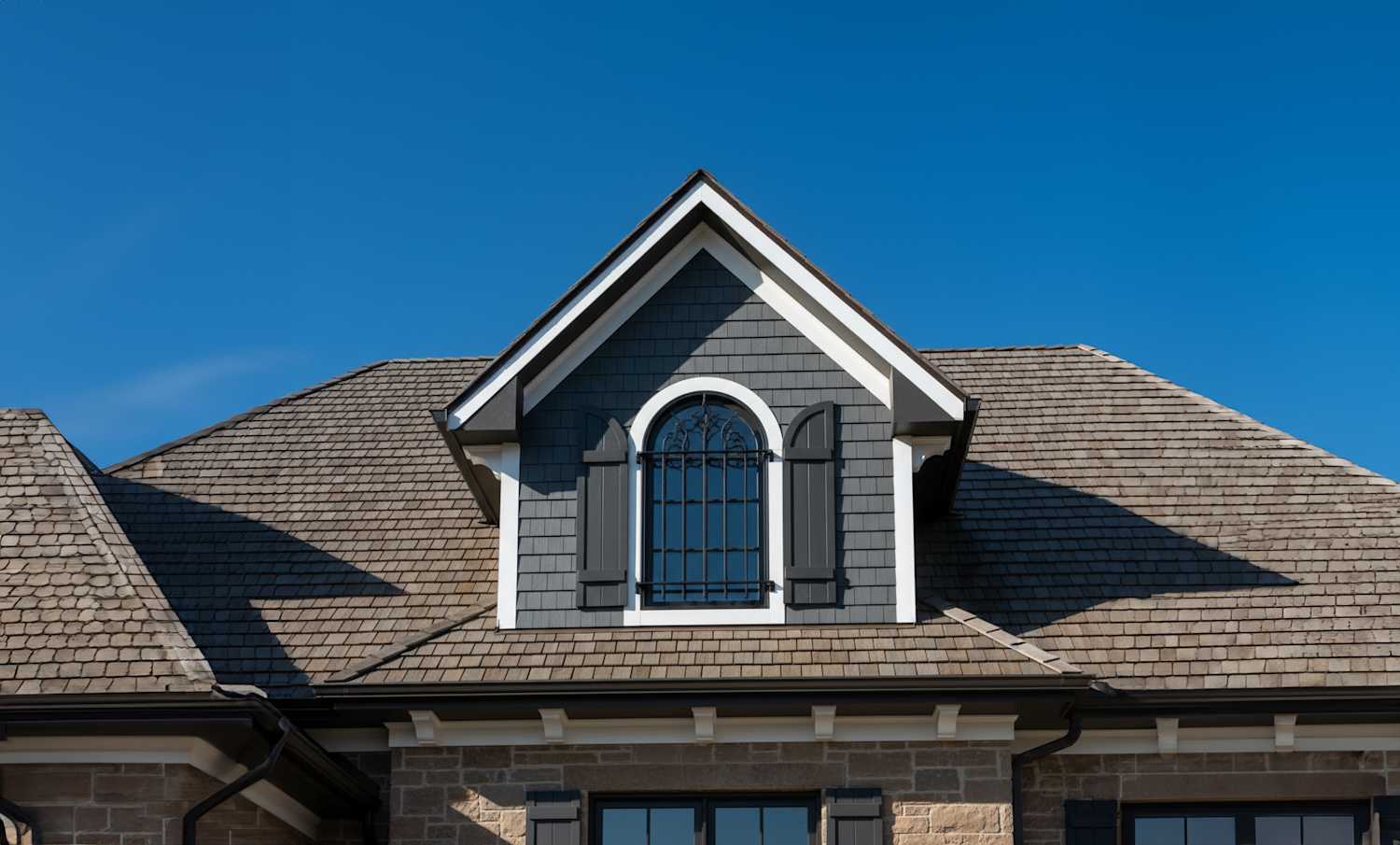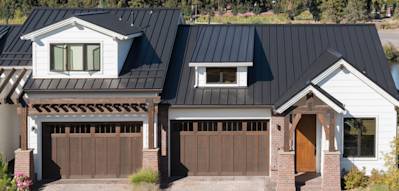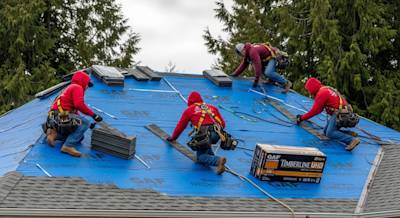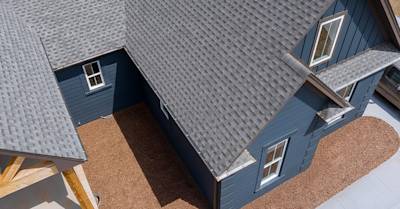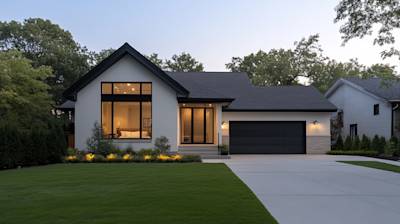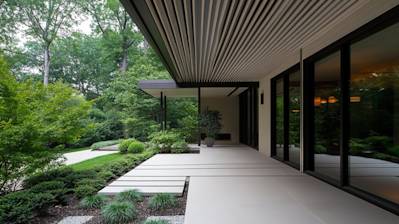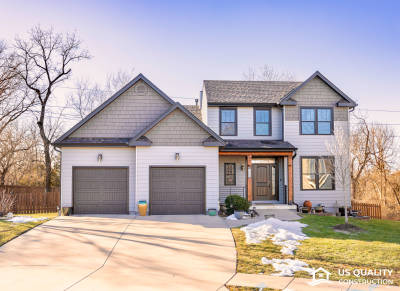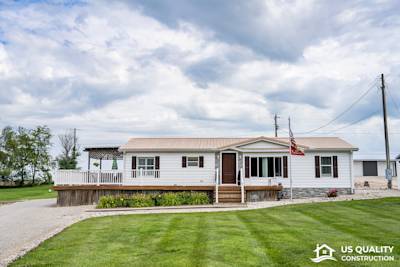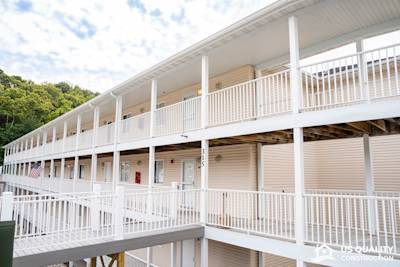The rake of a roof is perhaps one of the most overlooked aspects of structural design and architecture, yet it holds significant importance in the overall aesthetic and functionality of a building. In this blog post, we aim to provide comprehensive insights into what a roof rake is and why it matters. This detailed information will assist not only architects but also homeowners in making informed decisions about roof designs.
Defining Roof Rake
In the most simple terms, the rake of a roof is the slanting edge of a gable-style roof plane that extends down and apart from the house's peak. The rake can essentially be failed to the part of the roof that overhangs the house’s sidewall.
Anatomy of a Roof Rake
Understanding the anatomy of a roof rake is important to comprehend its functionality and the role it plays in the structural design. Here are the main components:
- Rake Board: Also known as the barge board, it's the visible board that runs along the rake of the roof.
- Fascia: This is a board that is nailed across the ends of the roof rafters. Sometimes the term fascia is used to denote overall rake or trim details.
- Rake Edge: This refers to the metal flashing that's applied to the edges of the roof, where the shingles meet the rake board.
Types of Roof Rakes
There are two common types of roof rakes that have variations in their design structure.
- Closed Rake: In this type, the sheathing or deck material of the roof extends to the outer edges without leaving any visible gaps. This allows for complete encapsulation of rafters or trusses at the rake.
- Open Rake: Conversely, the open rake design leaves the edge of the roof deck, and the end of the rafters or trusses visible. This rake style may offer more design variation and ventilation, but potentially at the cost of greater exposure to weather conditions.
The Importance of a Roof Rake in Architecture
While the rake of the roof might appear merely as a structural necessity, it does play a substantial role in architecture and construction. Here are a few reasons why:
Aesthetic Appeal: The rake of a roof lends a unique appeal to a building's architecture. It defines the style and character of the house making it stand out.
Prevention of Water Damage: The slanting edge of the roof rake acts as a crucial line of defense against water damage. It diverts rainwater away from the walls, protecting them from potential dampness and leakage.
Enhanced Durability: With the right design and setup, a well-crafted roof rake can also add to the roof's durability by shielding the house against heavy wind, snow, or debris.
Frequently Asked Questions about What Is The Rake Of A Roof
Is there any difference between the Rake of a Roof and the Pitch of a Roof?
Yes, there's a distinct difference between the two terms. While the rake of a roof pertains to the inclined, sloping part of the roof that extends from the eave to the roof's peak, the pitch of the roof refers to the steepness or angle of the roof. In other words, pitch is a measure of the degree to which a roof slopes.
Why is the Rake of a Roof important to understand?
Just like any other part of a building, understanding the rake of a roof is crucial, especially during the roof design and construction process. Your roof's rake can impact numerous factors including aesthetics, drainage, the amount of usable attic space, and even how snow collects or sloughs off the roof. Therefore, getting the angle of your roof's rake right can make a significant difference.
Can the Rake of a Roof be adjusted?
Adjusting the rake of an existing roof can be a costly and complex process, generally involving significant reconstruction. It’s much easier to determine and set the rake of the roof during the initial design and construction process. Therefore, if you have specific requirements for your roof's rake, it's best to discuss these with your architect or builder at the outset.
How does the Rake of a Roof affect a building's aesthetics?
The rake of a roof can significantly impact a building's visual appeal. A steep rake can make a home appear taller and can add a dramatic flair, while a shallower rake can give a home a more extended, sprawling appearance. The choice of the rake will depend on the overall design and aesthetic you want your house to present.
Does the Rake of a Roof influence energy efficiency?
Yes, the rake of a roof can affect the building's energy efficiency. A steep roof rake may allow for more attic space, which can be used for insulation. More insulation can help reduce energy costs in the winter and summer. Furthermore, a steeply raked roof can provide efficient runoff for rain and snow, leading to better home durability over the long term.
How does the Rake of a Roof impact the construction cost?
The rake of a roof can play a big factor in the total cost of construction. Steeper rakes require more materials and manpower to construct, therefore potentially raising costs. Shallower roof rakes could potentially save on construction materials and labor. However, costs can also fluctuate depending on the type of roofing material and size of the roof.
Are there different styles based on the Rake of a Roof?
Yes, there are numerous architectural styles distinguished by the characteristic rakes of their roofs. For instance, a Mansard roof has very steeply raked, almost vertical, sides. On the other hand, roofs in modern architecture often have very shallow rakes for a minimalist, sleek look.
Pros of the Rake of a Roof
The rake of a roof generally refers to the side of the roof that extends beyond the edge of the house. It essentially refers to the vertical or angled part of the roof that meets the sides of a structure. There are several considerable advantages of having a raked roof.
Aesthetic Appeal
Customization and Design
One of the main advantages of a raked roof is cosmetic. The way the rake of a roof looks is vital, as it adds a degree of character to the overall appearance of the home. As it is easily noticeable from the street, the aesthetic appeal of the rake can make or break the entire visual appeal of a house. In other words, well-designed and maintained roof rakes can significantly enhance the property's curb appeal.
Variety of Styles
Furthermore, the design of the roof rake can come in a variety of styles. This means that home owners have an array of different templates to choose from when deciding on the overall look they want to achieve for their house. In addition, roof rakes can be customized to match the homeowner's unique style and preference, adding a personalized touch to the design of their home.
Functionality and Durability
Protection Against Weather
The rake of a roof also serves a practical purpose in that it provides protection for the house. A significant benefit of roof rakes stems from its ability to deter water, snow, and ice from accumulating along the side of the house. Additionally, it can help protect the siding from weather damage, prolonging the structure's life span.
Reduced Maintenance
Moreover, roof rakes usually require less maintenance as compared to other parts of the house. With the correct installation and quality materials, they can hold up against severe weather conditions over a long period of time. This translates to potentially decrease the overall maintenance expenses of the house.
Cons of the Rake of a Roof
Despite the many advantages, there are also a number of potential drawbacks associated with the design and installation of the roof rake.
Installation and Maintenance
Complexity in Installation
The installation of roof rakes can be quite complex. Depending on the design and dimension of the roof, installing a roof rake may require professional help. Improper installation may lead to problems such as leaks or structural damage, hence it’s crucial to engage with a professional roofing contractor, which might add to the overall cost.
Difficulty in Maintenance
While roof rakes are generally low-maintenance, when maintenance is required, it can be challenging. Cleaning and repairing this area of the roof can be difficult and hazardous due to the height and steep angle of the roof. Special equipment and expertise may be required to perform these tasks, adding to the cost of upkeep.
Cost Implications
High Initial Cost
The cost of installing a roof rake can be considerably high, especially if using high quality materials and professional installation services. Depending on the homeowner's chosen design and materials, the overall expenses can add up quite significantly.
Potential for Future Costs
If improperly installed or maintained, roof rakes can potentially lead to costly repairs in the future. For instance, if water leaks through the roof due to improper installation, it could lead to extensive damage to the interior of the house. These additional repair and replacement costs need to be considered when deciding on the rake design of a roof.
Aesthetic Challenges
Design Restrictions
While the customization of a roof's rake allows for personalization, it may also limit the types of architectural styles a homeowner can choose from. Some designs may not be compatible with certain architectural styles or regulations, causing restrictions in the design process.
Need for Regular Cleaning
The roof rake, although serving functional benefits, can collect debris and dirt quite easily. The visibility of roof rakes from the street can make an unclean or poorly maintained rake a noticeable disservice to a house’s curb appeal. Therefore, regular cleaning, despite the inherent challenges, becomes necessary to maintain the aesthetic appeal of the home.
Myths and Misconceptions about Roof Rake
In the world of residential construction and home improvement, one term that often leads to misunderstandings and misconceptions is "roof rake". While it might seem straightforward to those in the industry, it can be complicated for a layperson to understand correctly. Misunderstandings can lead to mistaken purchases, improper installation, and unnecessary worries. Let's debunk some of these myths.
The Roof Rake is a Gardening Tool
One popular misconception is confusing a roof rake with a garden rake. Indeed, they may sound like they serve similar purposes, especially to individuals who are not acquainted with roofing lingo. This comparison could not be farther from the truth.
What is the Roof Rake?
The roof rake is an architectural term used to denote the sloping sides of a gable end. In other words, it's the edge of the roof that runs from the ridge (the top/highest point of the roof) to the eave (the lower edge of the roof). It not only serves an aesthetic function but is integral to the overall structure and water drainage system of the house.
A garden rake, on the other hand, is utilized for garden maintenance. As such, they are two completely different entities, serving entirely different purposes.
A Steeper Rake Provides Better Water Drainage
Commonly, it is thought that the steeper the roof rake, the better it can drain off rainwater. The reality, however, is a bit more nuanced. While it's correct that steep roofs shed water and snow more efficiently than low-pitched roofs, the rake angle is not the only factor contributing to a roof's drainage capability.
Various Factors Governing Water Drainage
The material used for roofing, the quality of installation, the gutter system, and how well-maintained the roof is all contribute significantly to the roof's capacity to handle precipitation. Furthermore, sometimes steeper rakes can present other problems, like being more prone to wind damage. So while it holds some truth, the concept isn't as simple as it seems.
The Rake of a Roof is All about Aesthetics
Many people believe that the only purpose of designing a specific rake for the roof is for aesthetic appeal. While it's true that the rake of a roof can considerably affect a house's overall appearance, claiming that aesthetics is its only function is a misconception.
Practical Aspects of a Roof Rake
The roof rake helps guide the water flow towards the eaves, from where it is channeled into gutter systems and downpipes. Moreover, the design of the rake complements the wind resistance of the roof and adds to the structural integrity. Hence, while aesthetics plays a role, the rake ensures efficient functionality of the roof as well.
All Roof Rakes are Created Equal
Lastly, some homeowners may assume that all roof rakes are the same and do not require specific measurements or materials. This notion is fundamentally flawed. In fact, the selection and installation of a roof rake should follow particular guidelines and criteria.
Roof Rake Requirements
The degree and design of the rake need to be compatible with the overall roof structure, the climate, and the house's architectural style. Furthermore, the construction of the rake should be robust and properly installed to avoid water leakage, damage from heavy winds, and other related issues. It is, therefore, recommended to hire experienced professionals to handle the task.
By debunking these common myths and misconceptions about roof rake, homeowners can make more informed decisions when it comes to their roofing needs. Whether it is about purchasing materials or hiring a professional for roof installation or maintenance, having a clear understanding of roof rake concepts is undoubtedly beneficial.
Summary
So, after all our chat, you'd have gathered how crucial the concept of "what is the rake of a roof" is in the field of construction and architecture. In layman's terms, it's just the slope or the incline of your roof. But it's this incline, this rake, that determines how effectively your roof can handle wind, rain, snow, and all those elements out there. A steeper rake might mean a more expensive build, but it also can handle heavy snow a lot more efficiently.
By understanding the rake of a roof, you're also better prepared to make decisions about your home - whether you're building, buying, or maintaining it. The roof rake isn't just about how your house looks, although that's certainly part of it. The rake also plays a part in how long your roof lasts, how well it holds up against weather, and as a result, how well it protects your home. So, it definitely isn't something to overlook.
Finally, let's not forget the impact of the rake of the roof on your attic space and your home's energy efficiency. An attic with ample room can offer additional living or storage space. Plus, it can aid in controlling the temperature within your home, saving energy, and wallet! So, the next time you find yourself staring at a roof, remember - what you're looking at isn't just a stack of shingles. It's a vital part of the home with a science, and an art, all its own.
About US Quality Construction
US Quality Construction is a proud local business based right in the heart of Kansas City, MO. We strive to provide top-notch construction works that speak volumes about our dedication to quality, longevity, and style. Rooted in the community, we take pride in understanding and upgrading the architectural landscape of Kansas City. Our expert team is well-versed in various industry projects; residential, commercial, or industrial, there's no project too big or small for us. We pair an innovative approach with our solid workmanship to give our clients the best possible results. Plus, we're always here to help you transform your construction dreams into tangible reality. US Quality Construction - your trusted partner in crafting bespoke, high-quality structures in Kansas City!
Tags: roofing, angles, construction,
